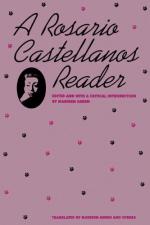|
This section contains 6,117 words (approx. 21 pages at 300 words per page) |

|
SOURCE: “Images of Women in Rosario Castellanos' Prose,” in Latin American Literary Review, Vol. VI, No. 11, Fall-Winter, 1977, pp. 68-79.
In the following essay, Rodriguez-Peralta explores Castellanos's intention in her fiction to demythify cultural and popular images of women.
The trajectory of Rosario Castellanos' prose begins within the indigenist literature of twentieth century Latin America and extends the line marked by Alcides Arguedas, Jorge Icaza, Gregorio López y Fuentes, Ciro Alegría, and more recently, by José María Arguedas. Indeed, from the modified use of selective contemporary narrative techniques, and a subtle exploration of psychological perspectives, Arguedas and Castellanos form a link between the indigenist novel of protest against injustice and the contemporary novel of existential determinism.
Castellanos' prose, however, takes a sharp turn away from indigenism and the flavor of the province and enters the terrain of contemporary Mexican women—or better, of contemporary feminism. Vertically...
|
This section contains 6,117 words (approx. 21 pages at 300 words per page) |

|


